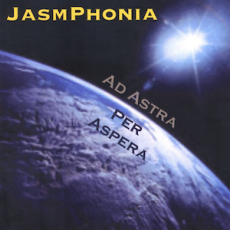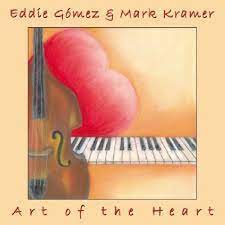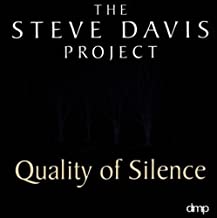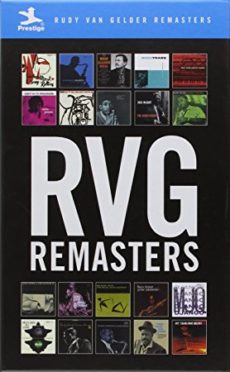
Daily Dose Of Jazz…
Eric Soleil was born July 9, 1961 on the wind-swept plains of the Kansas prairie and began his musical career in elementary school where he was forced to play the trumpet that was handed down from his older brothers. He infuriated his band instructor by making up his own parts instead of playing the fourth-chair lines intended for him. He also began to compose little pieces on the family’s upright piano. In high school, Eric pursued concert choir and the thespian arts, earning a theater scholarship to college. At 19 years of age, he began studying the electric bass.
Deeply rooted in classical music, he also had an adoration for American jazz, which led to incorporating classic orchestral voices with some neo-Baroque, jazzified idioms that became Jazz-Symphonia. He later played the baritone, french horn, trombone, finally settling on the tuba where he remains an inveterate bass clef performer.
A unique blend of symphonic instruments with jazzy undertones, JasmPhonia is the nom de guerre of Eric, a gifted multi-instrumentalist/composer who utilizes acoustic symphonic voices and midi composition to create a rich mixture of chamber music and Nu-jazz styling. Eric has compiled his first CD, “Ad Astra Per Aspera” (To The Stars Thru Difficulty).
Tubist Eric Soleil continues to pursue a career in music, writing from the keyboard, drums, and bass, and performing his own unique original compositions. He is also continuously developing his skills as an artist, producer, and engineer.
More Posts: bandleader,bass,drums,engineer,history,instrumental,jazz,keyboard,music,producer,tuba

Daily Dose OF Jazz…
Mark Kramer was born November 3, 1945 in Philadelphia, Pennsylvania. His prelimonary tutelage came from members of the Philadelphia Orchestra who mentored him on violin from the age of five. His early jazz performances in his teens and twenties included Michael and Randy Brecker, Charles Fambrough, Stanley Clarke, and Eric Gravatt.
Over the next decades his trio went on to record a series of specialty productions including the largest known body of jazz renditions of complete Broadway shows, jazz versions of principal themes from the John Williams score of Harry Potter and the Sorcerer’s Stone, and a compilation of jazz renditions of the music of The Rolling Stones.
Kramer has mainly been an arranger and leader of his own trios throughout his career. His numerous recordings/productions are often listed under The Mark Kramer Trio. Many works from the late Eighties with bassist Eddie Gómez are listed under Eddie Gómez and Mark Kramer or simply Eddie Gómez.
A far-ranging catalog of duo and trio recordings included the Art of the Heart on Art of Life Records. Pianist, composer, arranger, and producer/engineer Mark Kramer continues to pursue his creativity in music.
More Posts: arranger,bandleader,composer,engineer,history,instrumental,jazz,music,piano,producer

Daily Dose Of Jazz…
Steve Davis was born on September 10, 1958 in Santa Barbara, California. With Shelly Manne as his godfather, he became interested in the drums at a young age. Following the advice of drum teacher Alan Dawson, he moved to New York City in the early 1980s to begin his career as a jazz drummer.
Once there Steve met jazz educator Jamey Aebersold, and by 1982 joined the Aebersold clinic faculty. Throughout the 1980s while studying privately with Joe Morello he worked in New York City, meeting pianist Lynne Arriale at a jam session soon after she moved to the city in 1991.
As an educator, Davis holds a faculty position at the Jamey Aebersold Jazz Summer Schools in the US and the Jazzwise Summer Schools in the UK. He has taught at Triton College, Webster University, Washington University, Berlin Conservatory of Music, Indiana University, and the University of South Florida.
He has recorded five albums as a leader, and eighteen as a sideman with Arriale, Aebersold, Joe Beck, Ali Ryerson, Manfredo Fest, Monika Herzig, Wolfgang Lackerschmid, and Walt Weiskopf. Drummer Steve Davis, who is a recording engineer, continues to perform and record as a musician.
More Posts: bandleader,drums,engineer,history,instrumental,jazz,music

Daily Dose Of Jazz…
Rudolph “Rudy” Van Gelder was born on November 2, 1924 in Jersey City, New Jersey. His interest in microphones and electronics can be traced to a youthful enthusiasm for amateur radio. Named for his uncle who had been the drummer in Ted Lewis’s band in the mid-1930s, he took trumpet lessons and trained as an optometrist at the Pennsylvania College of Optometry, in Philadelphia, thinking he could not earn a living as a recording engineer.
From 1943, after graduating, Van Gelder had an optometry practice in Teaneck, New Jersey, and moonlighted recording local musicians in the evenings who wanted 78-rpm recordings of their work. From 1946, Van Gelder recorded in his parents’ house in Hackensack, New Jersey, in which a control room was built adjacent to the living room, which served as the musicians’ performing area. The dry acoustics of this working space were partly responsible for Van Gelder’s inimitable recording aesthetic.
Interested in improving the quality of the playback equipment he acquired everything that could play back audio: speakers, turntables and amplifiers. One of Rudy’s friends, baritone saxophonist Gil Mellé, introduced him to Alfred Lion, a producer for Blue Note Records, in 1953. Within a few years he was in demand by many other independent labels based around New York City, such as Bob Weinstock, owner of Prestige Records. To accommodate each label – Blue Note, Prestige, Savoy, Impulse, Verve he assigned them to different days as Lion was more stringent with the sound of original music, Weinstock had essentially blowing sessions for some of the best musicians in jazz history.He also engineered and mastered for the classical label Vox Records in the Fifties.
Van Gelder worked during the day as an optometrist until the summer of 1959, when he moved his operations to a larger studio in Englewood Cliffs, New Jersey and became a full-time recording engineer. The new studio’s design was inspired by the work of Frank Lloyd Wright had high ceilings and fine acoustics with “no food or drink and do not touch microphones” policy as he himself always wore gloves when handling equipment.
By 1967 the labels were beginning to utilize other engineers more regularly but Rudy remained active engineering nearly all of Creed Taylor’s CTI Records releases, a series of proto-smooth jazz albums that were financially successful, but not always well received by critics. He was not without his detractors. Despite his prominence in the industry, like Lion who didn’t care for the overuse of reverb, and Charles Mingus refused to work with him because he change the sound of his bass. He remastered the analog Blue Note recordings into 24-bit digital recordings in its RVG Edition series and also remasters of some of the Prestige albums, and was happy to see the LP go by the wayside because it was hard for him to get the sound the way he thought it should be.
He received awards and honors being named a fellow of the Audio Engineering Society (AES), received the society’s most prestigious award, the AES Gold Medal, named a Jazz Master by the National Endowment for the Arts, received the Grammy Trustees Award, and Thelonious Monk composed and recorded a tribute to Van Gelder titled Hackensack.
Producer and recording engineer Rudy Van Gelder, who specialized in jazz and regarded as the most important recording engineer of jazz by some observers, passed away at home in Englewood Cliffs, New Jersey on August 25, 2016. Among the several thousand jazz sessions he recorded are the acknowledged classics John Coltrane’s A Love Supreme, Miles Davis’s Walkin’, Herbie Hancock’s Maiden Voyage, Sonny Rollins’s Saxophone Colossus and Horace Silver’s Song for My Father.
![]()





